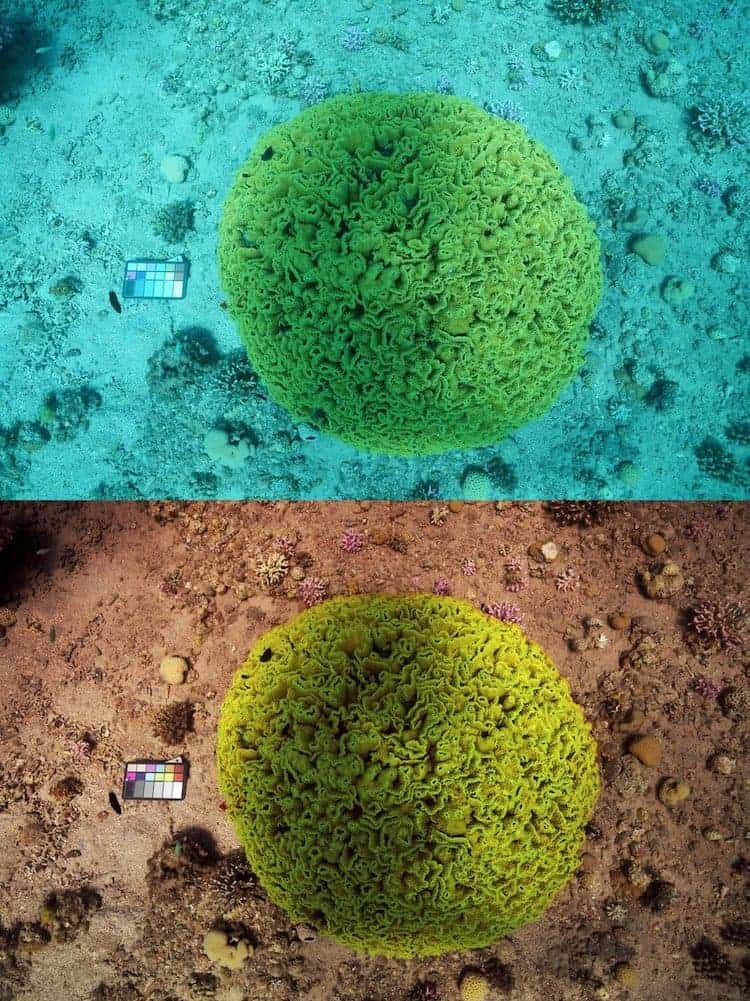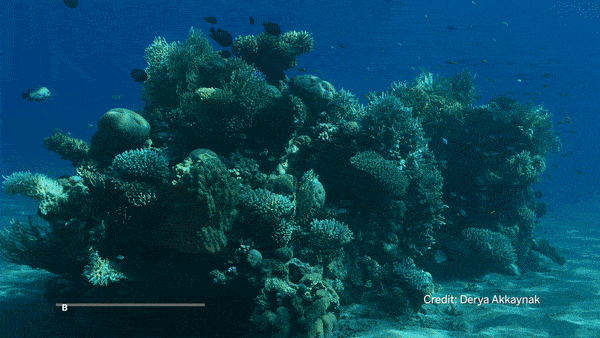
Underwater photography is not just for Instagram feeds — they are very important for biologists who monitor underwater ecosystem such as coral reefs. Coral reefs are some of the most colorful and vibrant environments on Earth, but like all underwater photos, photos of coral reefs tend to come out tainted by hues of blue and green. This makes it more difficult for researchers to identify species and traits of species from images, and makes monitoring considerably more difficult.
Now, there’s a solution for that: it’s called Sea-Thru.
Engineer and oceanographer Derya Akkaynak and her postdoctoral adviser, engineer Tali Treibitz, spent four years working to develop and improve an algorithm that would essentially “remove” the water from underwater photography.
The way the light is absorbed and scattered in water causes photos to be dim and overtaken by blue tones. Sea-thru removes the color cast and backscatter, leaving behind a crisp and clear image.

The method relies on taking multiple images of the same thing, from slightly different angles factoring in the physics of light absorption. Then, the algorithm produces a model of the photo, reversing the effects caused by the scattering and absorption.
“The Sea-thru method estimates backscatter using the dark pixels and their known range information,” the researchers describe the method in a working paper. “Then, it uses an estimate of the spatially varying illuminant to obtain the range-dependent attenuation coefficient. Using more than 1,100 images from two optically different water bodies, which we make available, we show that our method with the revised model outperforms those using the atmospheric model. “
The downside of this is that it requires quite a lot of images, and therefore, large datasets. Thankfully, many scientists are already capturing images this way using a process called photogrammetry (a technique that uses photographs to make certain measurements). Sea-Thru will readily work with photogrammetry images, Akkaynak says, which already raises intriguing prospects.

This method is not akin to image manipulation — it’s not photoshopping or image manipulation. The colors are not enhanced or modified, it’s a physical correction rather than a visually pleasing modification, says Akkaynak.
Although the algorithm was only recently announced, it’s already causing quite a stir due to its potential. Any tool that can help scientists better understand the oceans, particularly at this extremely delicate time, can’t come sooner enough.
“Sea-thru is a significant step towards opening up large underwater datasets to powerful computer vision and machine learning algorithms, and will help boost underwater research at a time when our oceans are increasing stress from pollution, overfishing, and climate change,” the researchers conclude.






